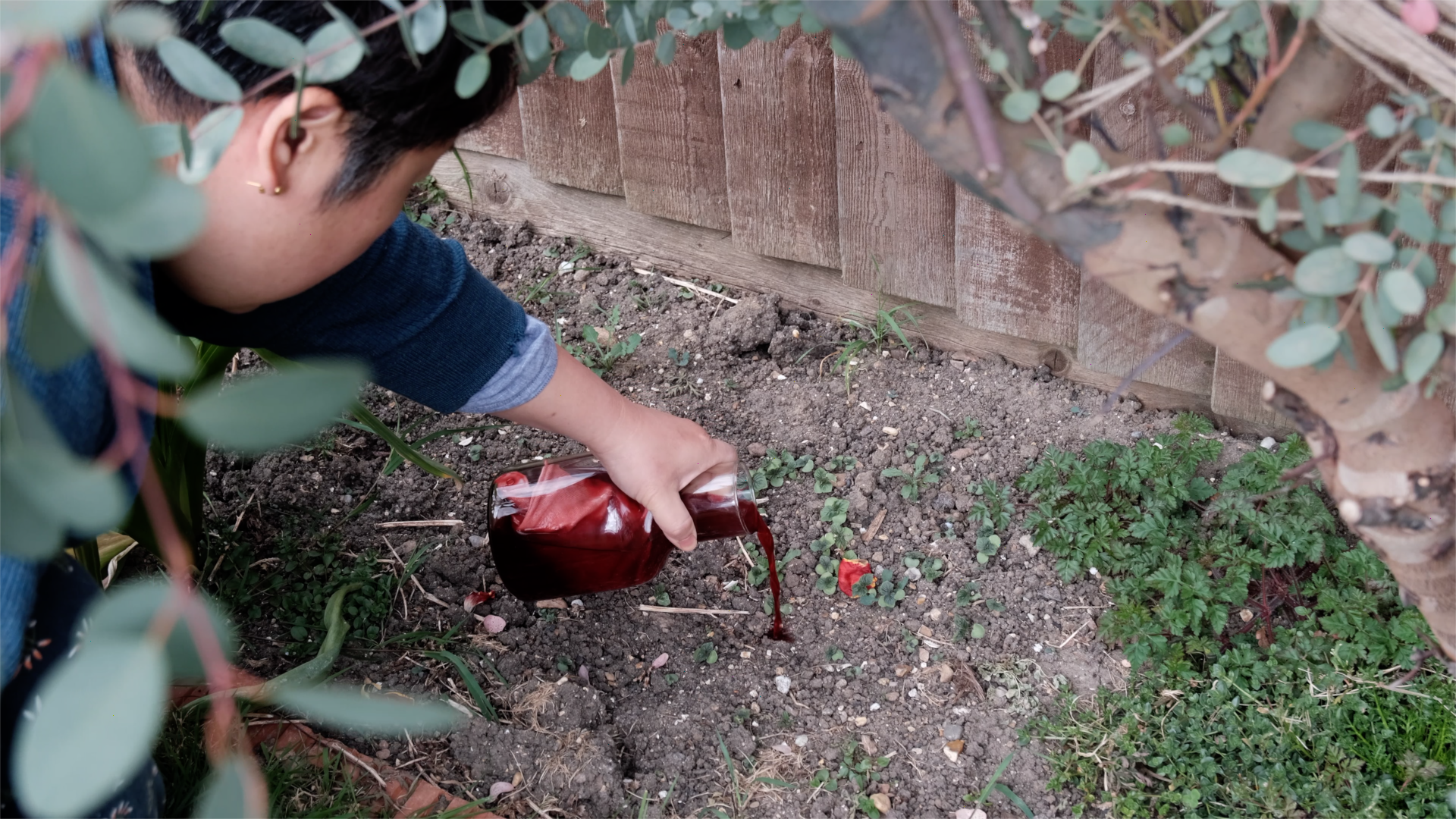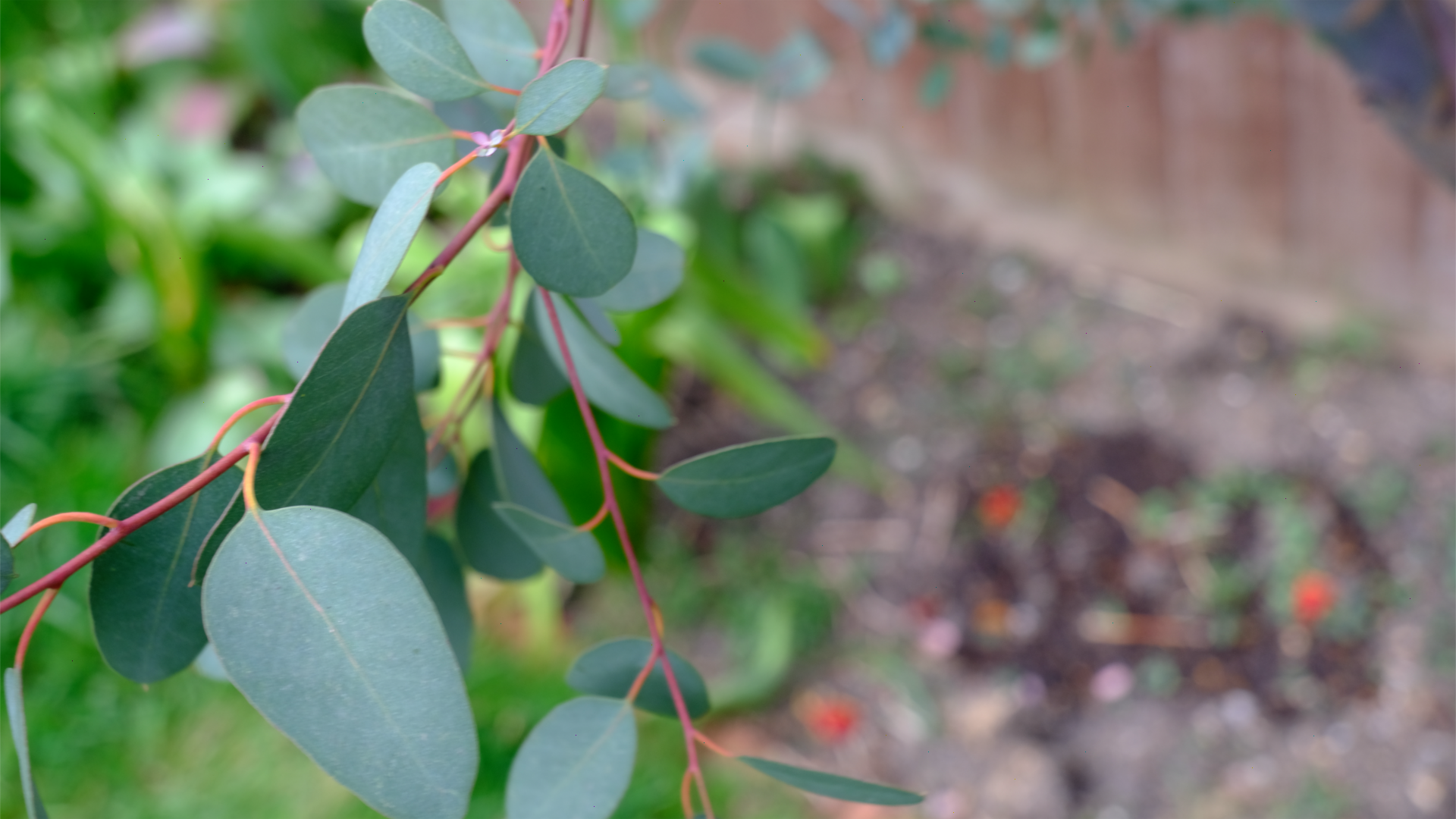Taey Iohe
Blood feeding

Still images from Blood Feeding, film, 5 min 33 sec, 2022
At the driest drought,
at the incurable contagion,
my gaejim, folded hemp for monthly blood, are suddenly sought after
for fearful warning flags, to wish for the rain
what seemed gross
, unthinkable, tainted transforms into magical power
when it is most needed
![]()
Taey Iohe weaves stories of how women’s period blood has appeared in science and culture as an unspeakable, potent, active and resilient substance. Gaejim are Korean folded hemp cloths used as pads for menstruation. Gaejim were taboo in a public and patriarchal society; they would be folded multiple times carefully by women when clean and would be washed at night or out of sight to protect public sensitivities. However, at times of natural disaster or contagion, the Gaejim would be credited with powerful defensive and protective properties. Dokkaebi (Korean goblins) and other agents of destruction or terror were known to be fearful of Gaejim; so the Gaejim would be flown as flags on the border or limits of the village or town to strike fear into the Dokkaebi. At these times the Gaejim would take on the power of an amulet, and become near-worshipped.
Taey extends this story into action, using knowledge of the non-industrial and non-chemical properties of period blood and its established Korean powers of protection and guarding. She shows the use of period blood in sustaining the eucalyptus tree: the eucalyptus historically was widely planted by colonising forces for its rapid growth and value as timber and oil. However it also was prone to wildfire, which its seeds would be uniquely able to survive. A weapon of colonising forces, having shown it will turn against them when inflamed by the weather, is then re-vitalised by blood/fluid from the Gaejim, strengthening it in preparation for the return of the next Dokkaebi.
Blood Feeding is supported by Ignota Books.
at the incurable contagion,
my gaejim, folded hemp for monthly blood, are suddenly sought after
for fearful warning flags, to wish for the rain
what seemed gross
, unthinkable, tainted transforms into magical power
when it is most needed

Taey Iohe weaves stories of how women’s period blood has appeared in science and culture as an unspeakable, potent, active and resilient substance. Gaejim are Korean folded hemp cloths used as pads for menstruation. Gaejim were taboo in a public and patriarchal society; they would be folded multiple times carefully by women when clean and would be washed at night or out of sight to protect public sensitivities. However, at times of natural disaster or contagion, the Gaejim would be credited with powerful defensive and protective properties. Dokkaebi (Korean goblins) and other agents of destruction or terror were known to be fearful of Gaejim; so the Gaejim would be flown as flags on the border or limits of the village or town to strike fear into the Dokkaebi. At these times the Gaejim would take on the power of an amulet, and become near-worshipped.
Taey extends this story into action, using knowledge of the non-industrial and non-chemical properties of period blood and its established Korean powers of protection and guarding. She shows the use of period blood in sustaining the eucalyptus tree: the eucalyptus historically was widely planted by colonising forces for its rapid growth and value as timber and oil. However it also was prone to wildfire, which its seeds would be uniquely able to survive. A weapon of colonising forces, having shown it will turn against them when inflamed by the weather, is then re-vitalised by blood/fluid from the Gaejim, strengthening it in preparation for the return of the next Dokkaebi.
Blood Feeding is supported by Ignota Books.